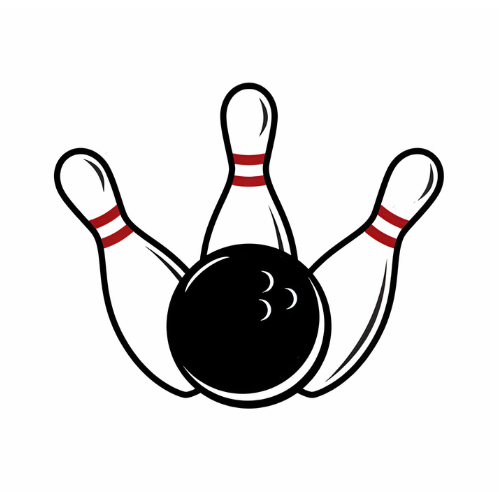Bowling is a game filled with unique terminology that adds to its charm and complexity. One such term that often arises during gameplay is the bucket. Whether you’re a casual bowler or a seasoned pro, understanding the bucket and its implications is crucial to improving your game.
In this comprehensive guide, we will delve into the world of bowling, exploring the term “bucket” in depth. We will define what the bucket means in bowling, discuss its physical appearance, and examine its significance within the context of the game.
Furthermore, we will explore strategies for converting the bucket spare, analyze the causes of leaving the bucket, and provide valuable tips for adjusting to this challenging spare configuration.

Understanding the Bucket in Bowling
The term bucket in bowling refers to a specific spare leave configuration that occurs when the 2-4-5-8 or 3-5-6-9 pins remain standing after the first ball delivery. The bucket spare is characterized by the pins forming a triangular shape resembling the handle of a bucket, hence the name. The bucket is a relatively common leave that requires precision and accuracy to convert into a spare.
Physical Appearance of the Bucket Spare
The bucket spare appears as a triangle formation of pins, either on the left or right side of the lane, depending on the bowler’s delivery and the lane conditions. The 2-4-5-8 configuration is commonly known as the “Big Four,” while the 3-5-6-9 configuration is referred to as the “Little Four.” Both configurations present unique challenges for bowlers aiming to convert the spare.
The Bucket as a Spare Conversion
When the bucket spare appears, it presents an opportunity for bowlers to showcase their spare conversion skills. However, converting the bucket spare can be challenging due to the specific pin configuration and lane conditions.
The Challenge of Converting the Bucket Spare
The bucket spare is considered one of the more challenging spare configurations to convert. The triangular formation of pins requires precise accuracy and control to hit the pocket and carry all the pins. The key difficulty lies in knocking down both the 2-4 or 3-5 pins and then having the ball deflect into the 5 or 9-pin respectively.
Strategies for Converting the Bucket
Target Adjustment: Aim to hit the pocket slightly lighter than usual, allowing the ball to drive through the pins and carry them into the remaining pins. Adjusting the target towards the 3-pin side for the 2-4-5-8 bucket and towards the 2-pin side for the 3-5-6-9 bucket can increase the chances of a successful conversion.
Ball Speed and Rotation: Experiment with ball speed and rotation to find the optimal combination that helps the ball maintain energy through the pins. A controlled ball speed and moderate rotation can help the ball drive through the pins more effectively.
Spare Shooting Techniques: Utilize spare shooting techniques such as targeting specific pin spots or using a spare system to increase accuracy. Regular spare shooting can improve your ability to convert challenging spares like the bucket.
Equipment Selection: Choose a bowling ball that matches the lane conditions and provides the desired ball reaction. Some bowlers prefer using a ball with a more controllable backend reaction to better control the pin action and increase the chances of converting the bucket.
Causes of the Bucket
The formation of the bucket spare is influenced by various factors related to lane conditions, ball path, and pin action. Understanding these factors can provide insights into why the bucket leave occurs and help bowlers make necessary adjustments. In this section, we will explore the causes of the bucket and their impact on spare opportunities.
Lane Conditions
Oil Pattern: The oil pattern on the lane can greatly affect pin carry and ball reaction. If the oil pattern is heavy in the middle, it may cause the ball to skid and not hook enough to carry the corner pins, resulting in a bucket spare.
Lane Breakdown: As the game progresses, the lane conditions can change due to the breakdown of oil. This breakdown can affect ball motion and make it more challenging to carry all the pins, leading to the bucket left.
Ball Path
Entry Angle: The entry angle at which the ball hits the pins plays a significant role in pin carry. If the entry angle is too steep or too shallow, it can result in deflections that leave the bucket configuration.
Ball Speed: The speed at which the ball travels down the lane affects its interaction with the pins. Higher ball speeds may reduce the time the ball spends in the pin deck area, potentially resulting in a bucket spare.
Pin Action
Pin Carry: The pin carry, which refers to how the pins react and interact with each other upon impact, can influence the formation of the bucket. If the pins do not carry through properly, it can lead to a bucket spare.
Pin Deck Conditions: The condition of the pin deck, including the presence of oil or debris, can impact pin action. Any factors that hinder pin action may increase the likelihood of leaving the bucket.
FAQs
What is the difference between the bucket and the baby split?
The bucket and the baby split are two different spare configurations. The bucket consists of the 2-4-5-8 or 3-5-6-9 pins, while the baby split refers to the 2-7 or 3-10 pins. Both spares require different adjustments and targeting techniques to increase the chances of conversion.
Are there any specific bowling ball layouts to minimize leaving the bucket?
While there are no specific ball layouts guaranteed to eliminate leaving the bucket, certain layouts can help control ball motion and improve pin carry. Consulting with a knowledgeable ball driller or coach can assist in selecting the right layout for your game.
How can I practice converting the bucket spare?
Practicing spare shooting is crucial for improving your conversion rate. Set up the bucket spare repeatedly and focus on consistency and accuracy in your spare shooting technique. Experiment with different adjustments and spare ball options to find what works best for you.
Conclusion
Understanding the concept of the bucket spare and its impact on the game of bowling is essential for bowlers of all skill levels. By recognizing the causes, adjusting techniques, and maintaining a positive mindset, bowlers can increase their spare conversion rates and improve overall performance. The bucket spare presents a challenge, but with practice and the right strategies, it can be successfully converted. So, embrace the opportunity to refine your spare shooting skills, stay focused, and keep aiming for success on the lanes!

